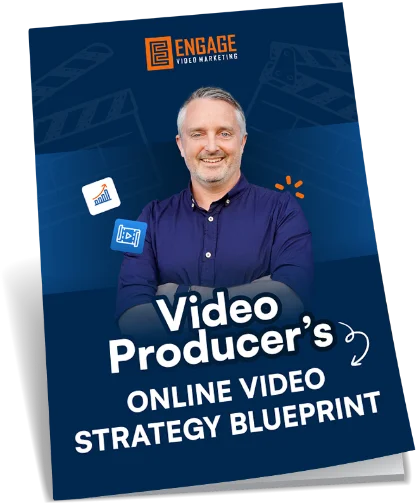It’s pretty simple. Any marketing, whether it be video marketing or otherwise, we’ll miss the mark if you have no idea who you’re trying to reach with your message. So, the critical first step when you’re getting started with video marketing for your business is to clearly identify your target audience, and that’s what I’ll be helping you do in this article.
So, if getting clear on your target market is so important when marketing a product or service, then why is this part still surprisingly often overlooked by so many businesses? Sure. A business will usually say that they know who their customers are, but when examined more closely, I often quickly uncover that perhaps they don’t really understand their customer properly on a deeper level. To really uncover your target audience, you need to be putting yourself in your customer’s shoes and consider what might be going through their heads at the key touch points that they could potentially have with your brand.
The fact is that the more you can know your customer, the deeper you understand their needs, the more effective your video strategy can be. Building a deep understanding of your audience is critical to understanding not only how you’re going to be talking to them through video, that the language you can use and so on, but also what sort of content they’re likely to engage with. Your target audiences’ age, gender, interests, habits, geographical location, and more. They all influence their online viewing engagement behaviours and are one of the most important elements to consider as part of an effective online video strategy. Now, there are three levels to this in order to really understand your target audience:
- Demographics
- Psychographics, and
- Behaviour profile
Now let me break down each one of these with some questions that you can ask in each section.
Demographics
So, first up you need to be clear on their demographics. This is the surface level stuff, such as age, gender occupation, family situation, household income and so on. The trick here is to be super clear and aim to identify specifics, not wide generalisations, such as:
“There are 30 to 50-year old male in a professional job, earning 80 to a hundred thousand dollars a year.”
That’s too generic. You need to be more specific. Instead make it a description of a potentially real person, such as:
“He’s a 32-year old male, who’s a secondary school maths teacher making $72,000 a year and so on and so on.”
So we’re being clear on the demographics and making them specific. You’re starting to paint a picture of a potentially real customer, not some vague representation of a faceless audience.
Psychographics
After demographics, it’s time to go inwards and consider the psychographics of your target audience. That is the stuff that’s going on between their ears, whether they’re conscious of it or not. You need to consider questions such as:
- What goals, aspirations or desires does your audience have?
- What pain or frustrations are they feeling?
- What emotions are they feeling that motivates them to buy from you?
- What fires them up?
- What makes them excited or makes them mad?
By getting to the heart of your target audience with these types of questions, you’ll begin to really understand how to show up for them, with your video content and importantly, how to hold their attention and move them to take action.
Behaviour Profile
And finally, we need to be taking some time to profile our audiences behaviours online, so that we can be strategic with our video marketing and reach them in the right place at the right time. Behaviour profiling then is about getting clear on things like:
- How do your ideal customers interact online?
- What platforms or types of content do they engage with?
- What time of day or day of the week is best for engaging with those people?
- What action are they likely to take after engaging with your content online?
Properly understanding your target audience is an often overlooked, but hugely important aspect of your video marketing strategy. By taking the time to really get to know your audience and develop an intimate knowledge of that needs, their desires, their pains and motivators, you’ll have an understanding of what language to use when communicating with them. You’ll also get insight into what stories to tell or information to share that will cut through the fog and allow your message to speak directly to them.
The truth is people buy from people, your audience are real people and it’s important never to forget that when defining a strategy. So I hope that’s been helpful for you, my friend, and I want to hear from you in the comments – Who’s your target audience and how well do you know them?






